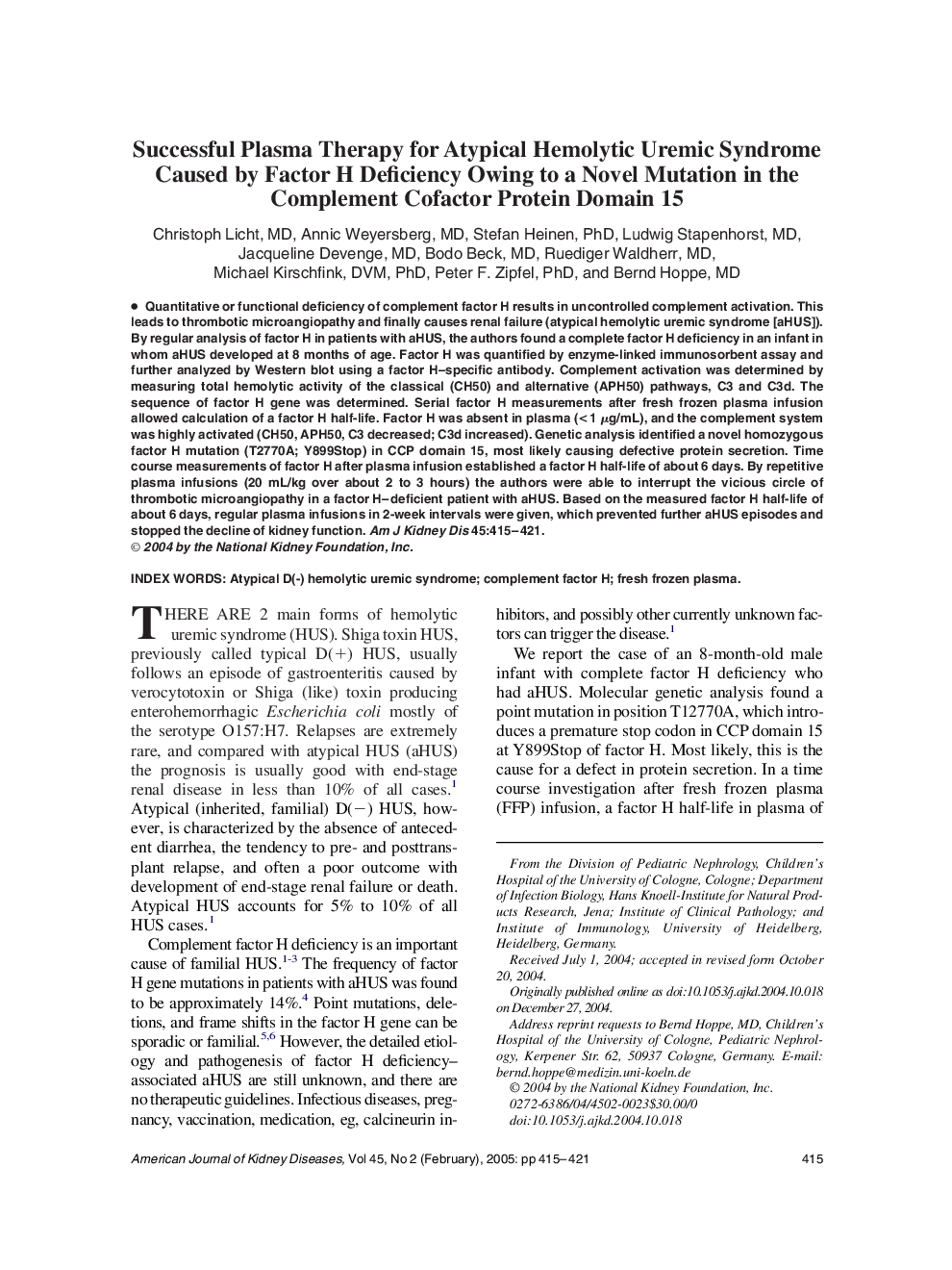| Article ID | Journal | Published Year | Pages | File Type |
|---|---|---|---|---|
| 10047744 | American Journal of Kidney Diseases | 2005 | 7 Pages |
Abstract
Quantitative or functional deficiency of complement factor H results in uncontrolled complement activation. This leads to thrombotic microangiopathy and finally causes renal failure (atypical hemolytic uremic syndrome [aHUS]). By regular analysis of factor H in patients with aHUS, the authors found a complete factor H deficiency in an infant in whom aHUS developed at 8 months of age. Factor H was quantified by enzyme-linked immunosorbent assay and further analyzed by Western blot using a factor H-specific antibody. Complement activation was determined by measuring total hemolytic activity of the classical (CH50) and alternative (APH50) pathways, C3 and C3d. The sequence of factor H gene was determined. Serial factor H measurements after fresh frozen plasma infusion allowed calculation of a factor H half-life. Factor H was absent in plasma (<1 μg/mL), and the complement system was highly activated (CH50, APH50, C3 decreased; C3d increased). Genetic analysis identified a novel homozygous factor H mutation (T2770A; Y899Stop) in CCP domain 15, most likely causing defective protein secretion. Time course measurements of factor H after plasma infusion established a factor H half-life of about 6 days. By repetitive plasma infusions (20 mL/kg over about 2 to 3 hours) the authors were able to interrupt the vicious circle of thrombotic microangiopathy in a factor H-deficient patient with aHUS. Based on the measured factor H half-life of about 6 days, regular plasma infusions in 2-week intervals were given, which prevented further aHUS episodes and stopped the decline of kidney function.
Related Topics
Health Sciences
Medicine and Dentistry
Nephrology
Authors
Christoph MD, Annic MD, Stefan PhD, Ludwig MD, Jacqueline MD, Bodo MD, Ruediger MD, Michael DVM, PhD, Peter F. PhD, Bernd MD,
